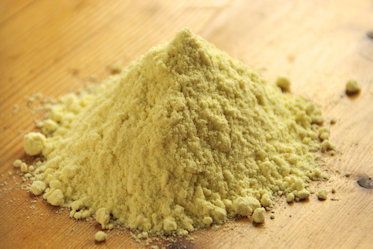|
Treats Coronary Artery Disorder
Consumption of millet in large amounts helps decrease triglyceride levels in the body. It thins the blood to prevent blood platelet clumping, thereby reducing the risk of sunstroke and coronary artery disorder.
Helps in Weight Loss
Millets contain tryptophan, an amino acid which lowers appetite and helps in managing weight. It digests at a slower rate and keeps stomach full for a longer period of time. Millets are high in fibre and satiate hunger quickly, preventing from overeating. People who want to lose weight should incorporate millets in at least one of their main meals.
Reduces Risk of Colon Cancer
Millet contains both fibres and phytonutrients, the combination of which is believed to reduce the risk of developing colon cancer. Lignan, a phytonutrient in millet, is converted into mammalian lignan in the intestine that protects from breast cancer. In fact, consumption of millet can lower the risk of developing breast cancer by 50%.
Helps to decrease high blood pressure
Magnesium in millet relaxes the muscles that line the inside of the arterial wall, which helps to reduce blood pressure. It also reduces the severity of asthma and frequency of migraines.
Helps in preventing Celiac disease
Celiac is a disease which damages the small intestine and interferes with the absorption of nutrients from food. People who suffer from this disease cannot tolerate gluten. This makes millet a perfect food for them since it is completely gluten-free.
Controls Diabetes
The low glycemic index in millet slows down the digestion process and keeps the blood sugar level at a constant ratio. Millets increase insulin sensitivity for people suffering with diabetes and also helps to control the sugar levels for non-diabetics especially type 2 diabetes.
Good Source of Antioxidants
The high amount of antioxidants present in millets fights free radicals present in the body which slows down the ageing process.
Helps in slowing down muscle degradation
Millets are high protein grains and contain lysine, an amino acid which slows down muscle degradation and helps to build leaner muscles.
Aids in Sleep
Tryptophan in millet raises the serotonin level in the body which helps in reducing stress. A cup of millet porridge every night can help to get sound and peaceful sleep.
Helps in relieving menstrual cramps
Because of its high level of magnesium, millet is a great food for women who suffer from unbearable pain and cramps during their menstrual cycle.
Aids breast milk production
Pregnant and lactating women are advised to consume Ragi in high amounts to increase the production of breast milk in their body. This enables the mother to feed the child for a longer period of time.
Improves skin elasticity
Millet is rich in amino acids called L-lysine and L-proline. These help to create collagen in the body, a substance which gives structure to the skin’s tissue. Thus, eating millet fortifies the collagen level to improve skin’s elasticity and makes it less prone to wrinkles.
Uses of Millet
Millets are also used to prepare alcoholic beverages. Millets are traditionally important grains used in brewing millet beer in some cultures, for instance by the Tao people of Orchid Island and the Amis or Atayal of Taiwan. It is also the base ingredient for the distilled liquor rakshi in Nepal and the indigenous alcoholic drink of the Sherpa, Tamang, Rai and Limbu people, tongba, in eastern Nepal.
Millets are major food sources in arid and semiarid regions of the world, and feature in the traditional cuisine of many others. Millet porridge is a traditional food in Russian, German, and Chinese cuisines.
In addition to being used for seed, millet is also used as a grazing forage crop. Instead of letting the plant reach maturity it can be grazed by stock and is commonly used for sheep and cattle.
Side-Effects & Allergies of Millet
Millets are safe when consumed in a moderate amount. It has been consumed as staple food by millions of peoples in the past thousands of years. However, excessive consumption of millet might cause an adverse effect. Millets contain goitrogen, a substance that interferes with the production of thyroid hormones and inhibits iodine uptake and utilization by the thyroid gland. Deficiency of iodine is a significant health problem which leads to
the development of enlarged thyroid gland, known as goitre. Goitre causes dry skin, anxiety, depression and slow thinking. In the Sudan region of Africa where millet is consumed as the primary source of energy, the occurrence of goitre was much greater than anywhere else in the world. Hence, people with thyroid problems need to restrict their consumption of millets.
|

